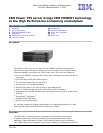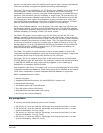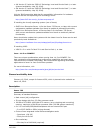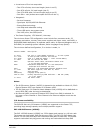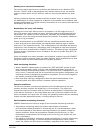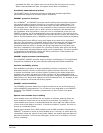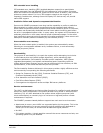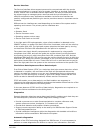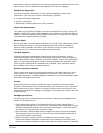
IBM United States Hardware Announcement
110-008
IBM is a registered trademark of International Business Machines Corporation
8
PCI extended error handling
PCI extended error handling (EEH) enabled adapters respond to a special data
packet generated from the affected PCI slot hardware by calling system firmware,
which will examine the affected bus, allow the device driver to reset it, and continue
without a system reboot. For Linux, EEH support extends to the majority of
frequently used devices, although some third-party PCI devices may not provide
native EEH support.
Predictive failure and dynamic component deallocation
Servers with POWER processors have long had the capability to perform predictive
failure analysis on certain critical components such as processors and memory.
When these components exhibit symptoms that would indicate a failure is imminent,
the system can dynamically deallocate and call home about the failing part before
the error is propagated system-wide. In many cases, the system will first attempt to
reallocate resources in such a way that will avoid unplanned outages. In the event
that insufficient resources exist to maintain full system availability, these servers will
attempt to maintain partition availability by user-defined priority.
Uncorrectable error recovery
When the auto-restart option is enabled, the system can automatically restart
following an unrecoverable software error, hardware failure, or environmentally
induced (ac power) failure.
Serviceability
The purpose of serviceability is to repair the system while attempting to minimize
or eliminate service cost (within budget objectives), while maintaining high
customer satisfaction. Serviceability includes system installation, MES (system
upgrades/downgrades), and system maintenance/repair. Depending upon the
system and warranty contract, service may be performed by the customer, an IBM
representative, or an authorized warranty service provider.
The Serviceability features delivered in this system provide a highly efficient service
environment by incorporating the following attributes:
• Design for Customer Set Up (CSU), Customer Installed Features (CIF), and
Customer Replaceable Units (CRU)
• Error detection and Fault Isolation (ED/FI)
• First Failure Data Capture (FFDC)
• Converged service approach across multiple IBM server platforms
Service environments
The HMC is a dedicated server that provides functions for configuring and managing
servers for either partitioned or full-system partition using a GUI or command-line
interface (CLI). An HMC attached to the system allows support personnel (with
client authorization) to remotely log in to review error logs and perform remote
maintenance if required.
The POWER7 processor-based platforms support two main service environments:
• Attachment to one or more HMCs is a supported option by the system. This is the
default configuration for servers supporting logical partitions with dedicated or
virtual I/O. In this case, all servers have at least one logical partition.
• No HMC.
• Full system partition: A single partition owns all the server resources and only one
operating system may be installed.



